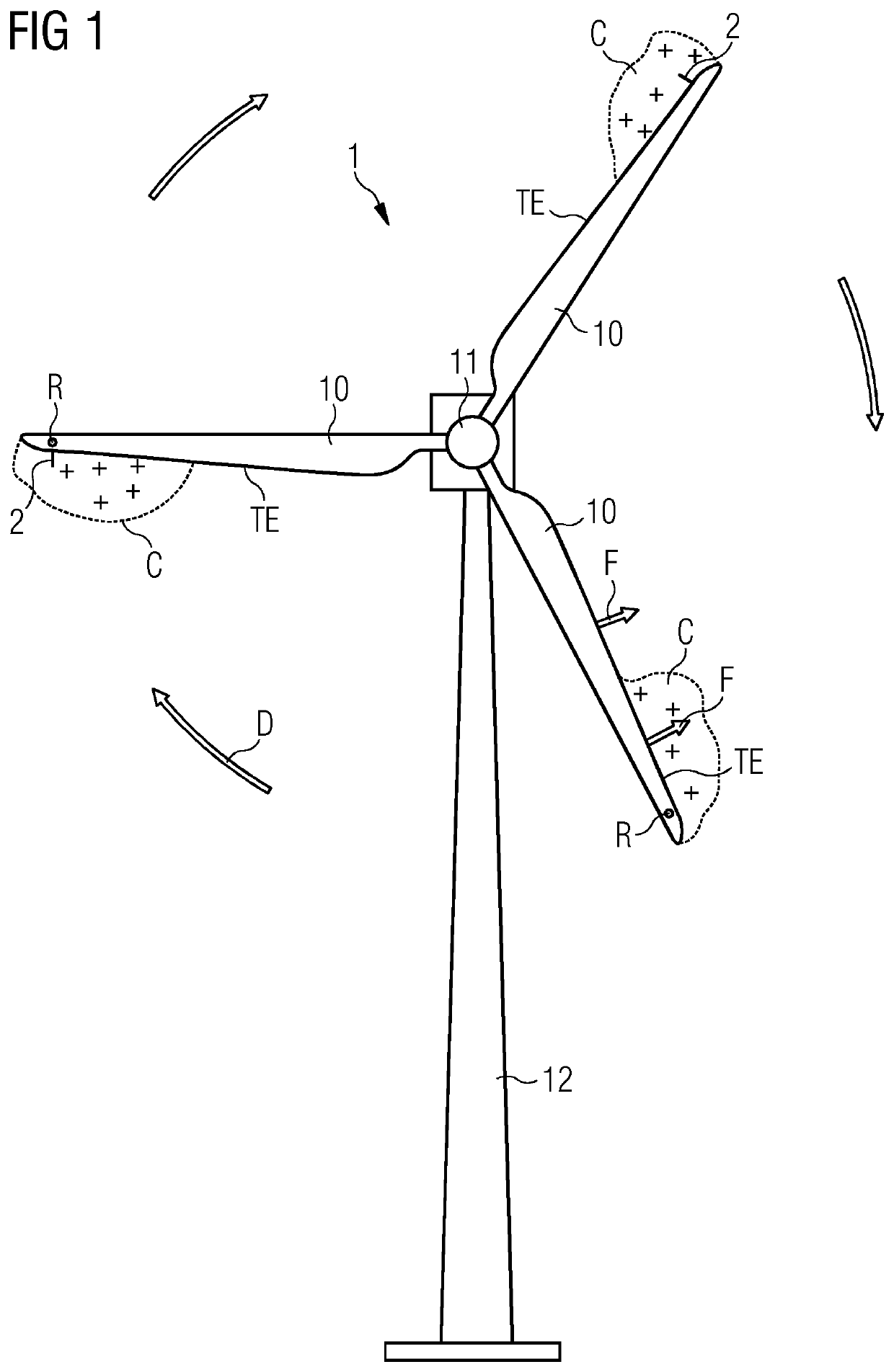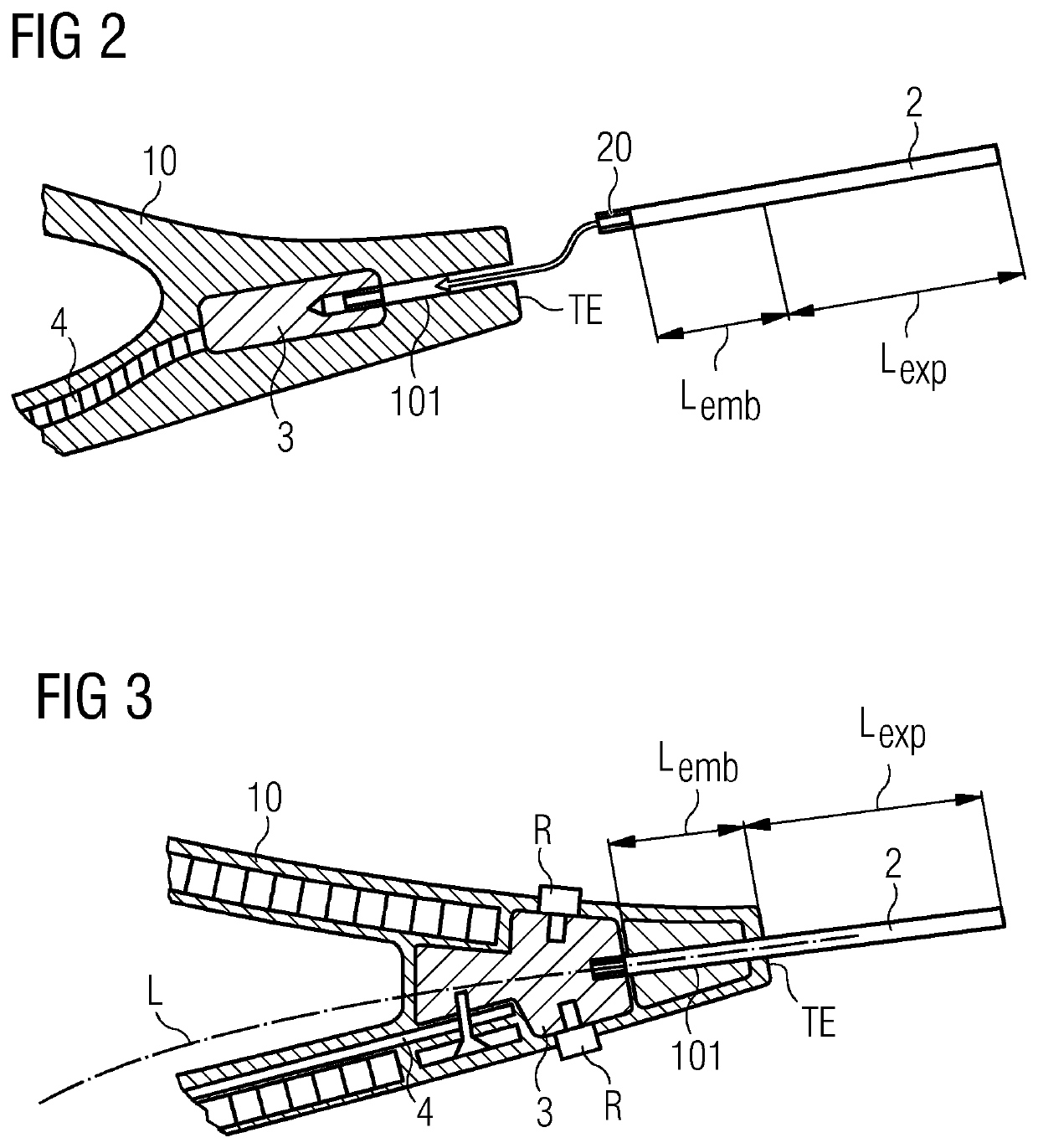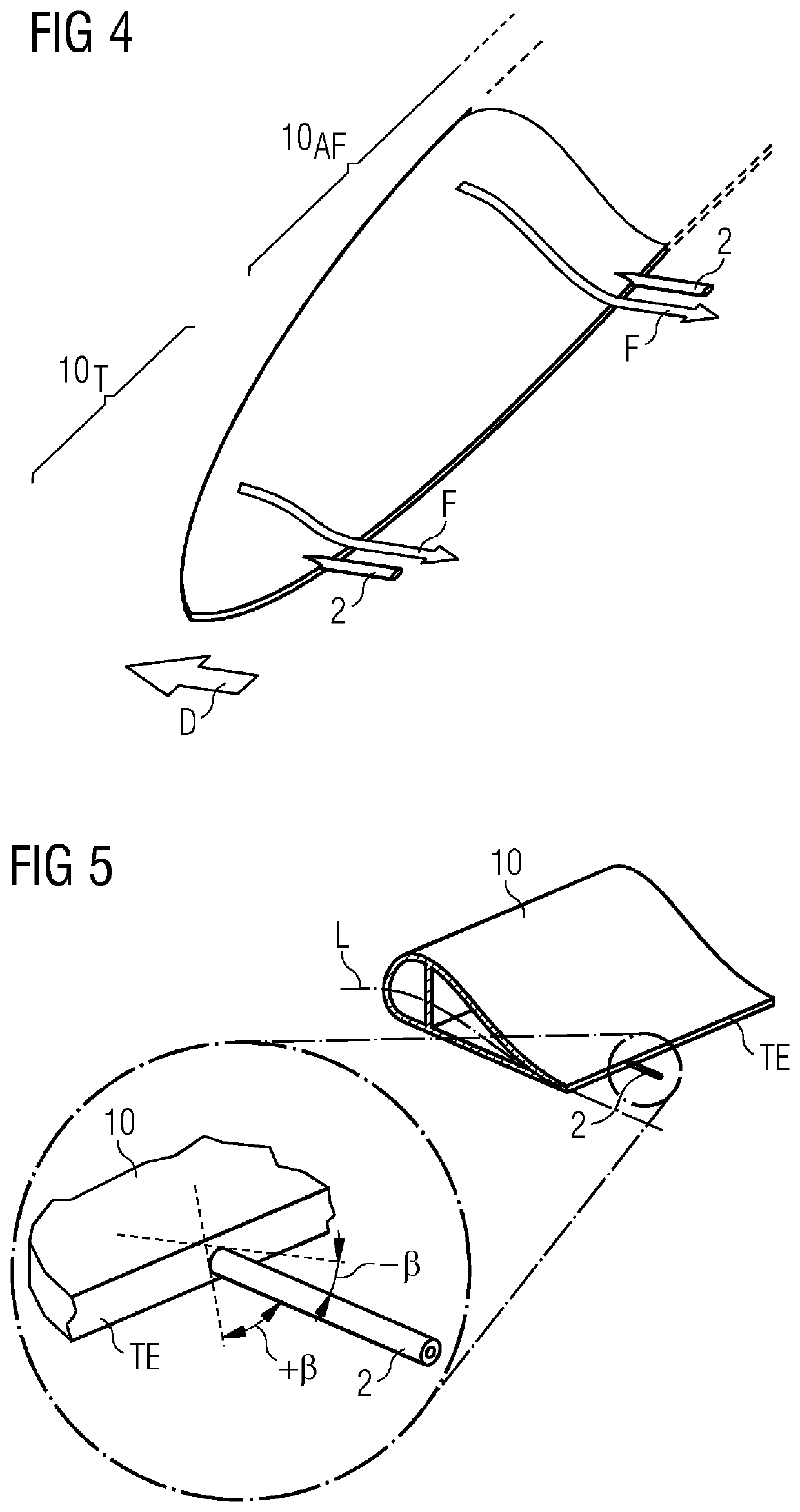Lightning protection arrangement
a technology for protecting the rotor blade and the lightning protection arrangement, which is applied in the direction of wind turbines, engine components, wind energy generation, etc., can solve the problems of affecting the lightning protection effect of the blade, the blade is generally most vulnerable to lightning strikes, and the prior art receptor is compromised, etc., to achieve the effect of minimizing the impact of blade aerodynamic performance, low profile and effective withstand
- Summary
- Abstract
- Description
- Claims
- Application Information
AI Technical Summary
Benefits of technology
Problems solved by technology
Method used
Image
Examples
first embodiment
[0043]FIG. 2 is a cross-section through a rotor blade 10 and shows a trailing edge receptor 2 of the inventive lightning protection arrangement. The trailing edge receptor 2 is formed as a rod or bar, with a threaded end 20 for connecting to a terminal 3 in the interior of the blade 10. A portion of the trailing edge receptor 2 with length Lexp will be exposed in the air behind the trailing edge TE, and a remaining portion with length Lemb will be embedded in the blade 10. The exposed length Lexp preferably extends over at least 10 mm, more preferably over at least 50 mm. The diameter of a rod-shaped trailing edge receptor 2 is preferably in the order of 8 mm, for a favourable cross-sectional area of at least 50 mm2 so that the trailing edge receptor 2 can safely carry the high current of a lightning strike.
[0044]The terminal 3 is connected in any suitable manner to a down conductor 4 as part of the blade-to-ground current path of the wind turbine's LPS, and this established configu...
second embodiment
[0045]FIG. 3 is a cross-section through a rotor blade 10 and shows a trailing edge receptor 2 of the inventive lightning protection arrangement. In this case also, the trailing edge receptor 2 is formed as a rod or bar, with a threaded end 20 for connecting to a terminal 3 in the interior of the blade 10, and a channel 101 has been provided in the trailing edge region of the blade 10 to receive the trailing edge receptor 2. The diagram shows that the channel 101 has been formed to lie more or less along the camber line L of the blade 10, so that the trailing edge receptor 2 will act as an extension of the camber line L.
[0046]Here also, a portion of the trailing edge receptor 2 with length Lexp is exposed in the air behind the trailing edge TE, and a remaining portion with length Lemb is embedded in the blade 10. In this embodiment, prior art receptors R are located on the suction side and pressure side of the blade 10. This realization may therefore be a retro-fit embodiment of the ...
PUM
 Login to View More
Login to View More Abstract
Description
Claims
Application Information
 Login to View More
Login to View More - R&D
- Intellectual Property
- Life Sciences
- Materials
- Tech Scout
- Unparalleled Data Quality
- Higher Quality Content
- 60% Fewer Hallucinations
Browse by: Latest US Patents, China's latest patents, Technical Efficacy Thesaurus, Application Domain, Technology Topic, Popular Technical Reports.
© 2025 PatSnap. All rights reserved.Legal|Privacy policy|Modern Slavery Act Transparency Statement|Sitemap|About US| Contact US: help@patsnap.com



